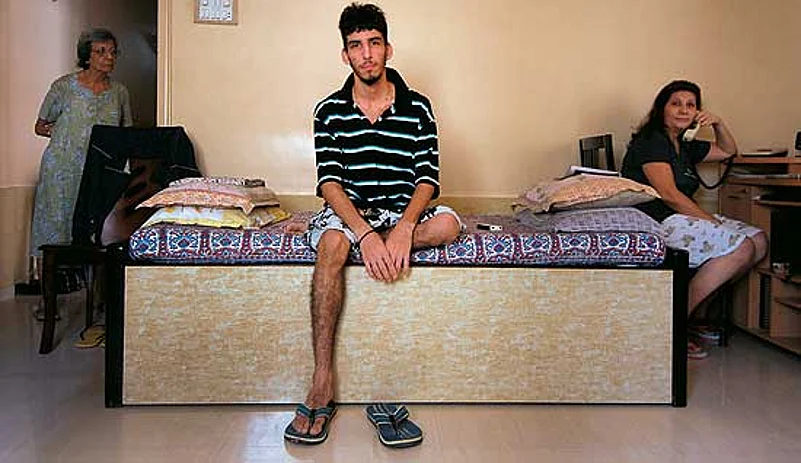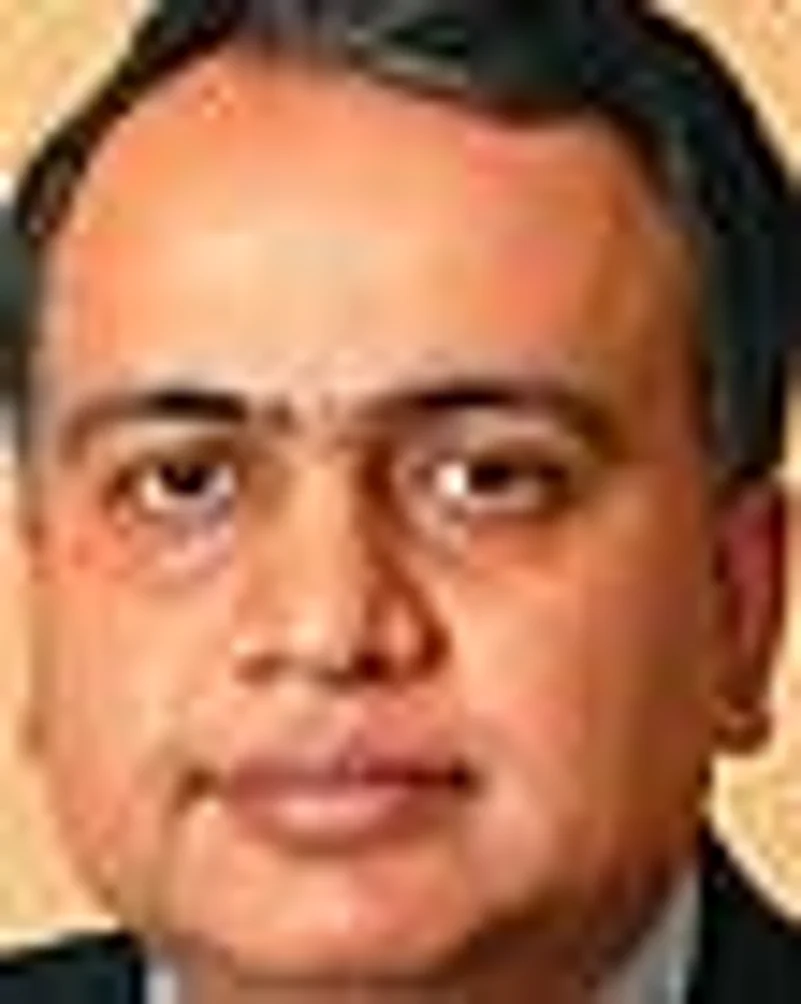Two years ago, 67-year-old Rakesh Mathur, a pensioner in Mumbai, had what is euphemistically dubbed as a cardiac “episode”. Under the doctor’s advice, he opted for a bypass to sort out the three blockages in his heart. Mathur was least worried about meeting the cost of the surgery—he had been buying health insurance from a public sector company (one that he is chary of naming) for 12 years. But post-surgery, when he filed his claim, Mathur got another shock to the system. The insurance company refused to pay the entire amount of the Rs 3 lakh he had incurred on the surgery, saying the bill was inflated. After much discussion and threats to take the matter to the consumer court, the insurer finally caved in and paid the full amount.
More recently, Delhi-based professional Madhu S. had a similar run-in with a leading private insurer. He had to suddenly shift hospitals after doctors had difficulties diagnosing what was behind a strong allergic reaction. But Madhu was reluctant to approach the insurer at the second hospital. “There was so much aggression from the company. I started getting palpitations just thinking of dealing with them again,” he says. So his second insurance policy was put into work. Here too he had a similar experience. “It was like a fish market,” he says.

Farang Arjumand Bakhtiyar
“Not everybody can fight for the claims...the companies know this.”
Farang, 18, was hospitalised with acute appendicitis at Parsee General Hospital, Mumbai. Royal Sundaram Alliance paid the hospital a portion of the claim of Rs 82,481 through the cashless facility and some amount to his father through a cheque. But it disputed a sum of Rs 26,000, saying the doctor’s fees had to be restricted. A case was filed with the consumer forum, arguing that the doctor’s fees was part of the bill, and the family had no option but to pay it to ensure timely treatment. The entire claim amount was reimbursed in an out-of-court settlement.
Such grim tales from holders of medical insurance policies are increasingly becoming commonplace. Year after year, consumers quietly pay up premiums for health insurance, hoping to ensure security for that “rainy day”. But when it does happen, in the middle of all that pain, fear and stress comes the added complication of dealing with the insurance company. Clearly, for many consumers, there’s a huge disconnect between what medical insurance promises—and what it actually delivers. Some 60 per cent of the complaints received at an insurance ombudsman office today relates to the non-payment of health insurance claims. Ditto for the National Consumer Disputes Redressal Commission. And consumer complaints are growing at a rather unhealthy 15-20 per cent.

| “It’s a confidence issue. The consumer is wondering, ‘Will I get value out of this?’...and that needs to be addressed, and soon.” —Sanjay Dutta ICICI Lombard General |

| “Leakages through fraud and abnormal charges are making health insurance unviable...we are trying to act as a proxy for regulators.” —M. Ramadoss New India Insurance | ||

| “The current issue with cashless is more to do with the providers and insurers...it’s a customer relations issue.” —J. Hari Narayan IRDA |

| “We should not lose money, nor should the insurers.” —Naresh Trehan Medanta | ||

| “With the cost of healthcare going up globally, I don’t see health insurance premiums going down here.” —Pervez Ahmed Max Healthcare |

| “A hospital giving you a nurse per patient will not charge the same as one that gives a nurse to three patients.” —K. Sujata Rao Union health secretary |
This is bad news in an era of increasing incidence of lifestyle-related diseases, longer life-spans and zooming medical inflation (an average 18-22 per cent annually). The irony in all this is that medical insurance has never been so much in demand. The market for new policies is growing at 20-25 per cent annually. Sure, this is on a small base—out of the Rs 3 lakh crore in healthcare spends in India last year, only three per cent passed through some insurance mechanism. But while only around 25 million people now have health cover, this market has attracted over 20 general and standalone health insurance companies.
Despite all this—the opportunity and potential in health insurance—the sector continues to face serious issues. It’s more of a nightmare now for patients than the risk mitigation tool it should be. More and more consumers are realising the need for some sort of cover protecting their health, but confidence in the products and faith that the company will meet expenses as promised is at an all-time low. Simply put, claim settlements are not seamless, leading to long delays and battles in consumer courts when they are rejected. And as the recent, and ongoing, controversy over withdrawal of cashless treatment at leading hospitals highlights, the consumer is yet again at the receiving end.
Systemic rot: Actually, the entire medical insurance system, from top to bottom—insurers, hospitals, consumers, third-party administrators (TPAs) and the regulator—are all contributors to the current woes. “Health insurance is a risk transfer mechanism. As an industry, we have to build credibility in that mechanism. It’s a confidence issue—the consumer is wondering ‘Will I get value out of this?’ and that needs to be addressed sooner rather than later,” says Sanjay Dutta, head (customer service) for motor and health, ICICI Lombard General Insurance. The news is that everyone recognises the many problems that ail health insurance. What’s lacking is the urgency to fix the mess. “We cannot afford to go wrong with health insurance,” says Vishal Bali of Fortis Hospitals. “There needs to be a clear-cut framework for the consumer and provider.”

Hoshang Dinshaw Khan
“The insurer was getting back at me. Even my agent felt what they were doing was wrong.”
Khan had an angioplasty to treat his heart problem. When his claim was filed, United India created a fuss and even appointed an independent check to verify it. This despite Khan having had the policy for many years. Although the company came around and paid up the full claim, at the time of renewal, it jacked up the premium from Rs 10,558 to Rs 55,952—an increase of 400 per cent. Khan took the matter to consumer court, which directed the insurer to renew the policy at the original rate.
Health insurance is a pool of premiums that customers build up through payments each year and claims are paid through that pool. Typically, to sustain the pool, the claims should be lower than the premiums collected. This implies that the number falling sick has to be lower than healthy people in the pool. However, average claim ratios for the four public sector general insurance companies—New India Assurance, National, Oriental Insurance and United India—are in the range of 130-140 per cent, including administrative costs. “We are not able to raise premiums to keep up with medical inflation, we have a skewed population (more old and sick than young and healthy insurance holders) and there are leakages in the system through fraud/abnormal charges which are making health insurance unviable. What we are trying to do is act as a proxy for regulators,” argues M. Ramadoss, CMD of New India Assurance.
The four public sector companies account for 70 per cent of the total health insurance market, including group (which accounts for the bulk) and retail products but excluding social insurance schemes like Rashtriya Swasthya Bima Yojana. And they dominate the market in more ways than one. Look at the hue and cry generated over the psus’ assertion that leading hospitals are overcharging—this led to the exclusion of numerous hospitals from the public insurers’ preferred provider network and the cancelling of cashless facilities for individuals in July this year. “They went about this the wrong way,” says a leading health insurance consultant, adding, “the biggest mistake was that they went behind the customer’s and provider’s backs.”
Flawed fundamentals: When the insurance sector opened up in 2000, segments of general insurance continued to have pre-set tariffs. The companies naturally focused on pre-set tariff segments because they meant profitable business. While health insurance was market-driven, there was little push for innovations to develop the segment. Health insurance was largely sold as a bundled product to groups (like companies) in addition to the lucrative fire and engineering covers they bought. Companies buying health insurance along with the fire/engineering covers negotiated rates down aggressively on health.
Insurance companies gave little thought to the losses being incurred on health and the adverse claim ratios because the profits from the other two segments made up for it. It’s only after the market was opened up for fire and engineering and some other portfolios in 2007 that there began a mad scramble to look at each segment. Insurance companies began to consider different models for the group covers—like co-payment, where the employee bears a proportion of the claim; increased premiums to cover parents and other members of the family; in some cases, companies pass on the burden of additional premiums to employees as well. As a senior official at Oriental Insurance put it, “It’s true we did not focus on it, it wasn’t a cash cow. This is what has led to unstructured and knee-jerk reactions to amend the situation.”

Bhalchandra Shah
“It’s disheartening how they treat customers in their hour of need.”
Shah’s wife underwent consecutive knee replacement surgeries in Mumbai’s Lilavati Hospital three years after buying an insurance policy. The private insurer denied the claim, saying it was a pre-existing, degenerative disease. Shah took the matter to the ombudsman who rejected it outright, agreeing with the insurer that knee replacement is a degenerative condition and it can’t occur overnight. As a last resort, Shah filed a complaint before the consumer forum, which held that the rejection wasn’t justified. The insurer paid up the full amount of about Rs 5.5 lakh.
In a bid to try and control costs and claims on both group and individual policies, public sector insurance companies have introduced sub-limits to cap spends on room rents; loaded premiums for people above the age of 55; reduced commissions to agents selling or renewing policies to people above the age of 55; classified the country into zones with differential rates for each zone and so on. None of this has helped. Losses are mounting and insurance companies are flummoxed in trying to figure out ways to correct the situation. Of course, customers too are feeling the heat as insurers try desperately to hold on to costs. Delayed claims, the search for loopholes, and the increasing power given to TPAs to deny claims are worsening a murky situation.
In reality, there is a fundamental flaw with mediclaim as a product. It’s unstructured and ambiguous. It lacks the depth to cover a wide range of diseases whether pre-existing or not, does not look at day care or outpatient costs, is restricted in cover (maximum sum assured of Rs 5 lakh) and has no options to cater to a range of income holders. The ‘one size fits all’ strategy no longer works in today’s environment. But there’s been very little push from regulator IRDA or the insurers to reform. Now, after continuing losses, the insurance firms are under pressure from the finance ministry and IRDA to find a solution.
Hospital trouble: Rising medical costs and increasing corporatisation of hospitals has not helped matters. Globally, insurance penetration is much higher and the insurance firms are able to negotiate better rates for customers due to the sheer volume they provide hospitals. In India, insurers have no bargaining power. The hospitals, though, argue otherwise. “Pricing of a product is very different from price for healthcare. Much depends on the cost of care—whether it is general care or individual care. The pricing and costing of our procedures even within our eight hospitals varies according to location, size and facilities,” says Dr Pervez Ahmed, CEO, Max Healthcare. In other words, overheads determine price to a great extent. (In Mumbai, for instance, real estate costs play a key role.)

Sudipto Nandi
“When my father died, he didn’t have insurance... ironically, it was a relief!”
Even being a doctor didn’t help here. Sudipto’s father, ent specialist Dr S.P. Nandi, tried to claim insurance after bypass surgery in 1998. National Insurance first said he wasn’t eligible since it was a pre-existing disease. Then it said the claim had been rejected because there had been a lapse in the policy in 1990. Explaining the lapse (his wife had died a couple of days before the premium was due), Dr Nandi had at that time written to the insurer and he was allowed to continue the policy. But finally his claim was rejected. Dr Nandi cancelled his policy and refused to buy further insurance.
The regulator, incidentally, has washed its hands of the cashless row, saying it’s an issue between the insurance firms and hospitals. As IRDA chairman J. Hari Narayan points out, “Quality is not abstract. It is linked to price. At each level of quality, there is a corresponding price. The current issue with cashless is more to do with the providers and insurers because it’s a customer relations issue.” One of the biggest impediments here is the fact that healthcare in India is a state subject. The result is utter chaos as there are no standard norms for setting up hospitals or monitoring quality of healthcare delivered, treatment protocols, diagnostic tests and charges for procedures.
Hospitals are also guilty of overcharging insured customers versus those who are not insured. While the clinical establishment bill is currently under discussion, it has to be accepted by all the states. Meanwhile, the hospitals and insurers are looking at a standard cost list of 42 procedures accounting for 60 per cent of total claims. Union health secretary K. Sujata Rao agrees, “What we have to develop is a standard for treatments and facilities, the tests, examinations—these are not laid out. It is through diagnostic tests that hospitals make money.” Also, there’s no standard for how claims should be handled, filed and addressed. That’s because each hospital has an individual relationship with the insurer and TPA. Changes are being considered here too.
| Seven steps to reform the system | Ten steps you, the consumer, can take | |
| 7 Insurers build volumes to bargain for better rates with healthcare providers Status: Work in progress 6 Lack of hospital beds; affordable healthcare Status: Expansion in healthcare on; no regulation on charges 5 Standardise processes in claims handling; clear-cut guidelines for TPAs Status: Being looked at, no deadline 4 Standardise treatment and costs; accreditation of hospitals Status: Being looked at, no deadline 3 Clearer product design with options for differing diseases, income groups Status: Being looked at, no deadline 2 Insurers ensure right pricing and adequate checks to weed out frauds Status: No clear move to reform 1 Hospitals, insurers reach an understanding on treatment rates Status: Currently under debate | 10 Take your grievances to a consumer redressal forum; details on www.ncdrc.nic.in 9 If unresolved, go to the insurance ombudsman in 12 select cities; details on www.irdaindia.org 8 IRDA too has a grievance cell with a toll-free number—155255. 7 Keep all correspondence between the hospital, TPA and insurer 6 If a claim is denied, approach company’s grievance cell, details on website 5 Ensure you have copies of all papers filed along with the claim form 4 Maintain all medical records; keep policy papers for every year of the contract 3 Be upfront about your health conditions; read the fine print carefully 2 Look for focused packages like those that cover critical illnesses along with life 1 Shop around carefully for a policy with adequate coverage, what matches your needs | |
For the record, the larger corporate hospitals in the cashless spotlight disagree that they charge excessively. Data collected by insurance companies through the TPAs, though, tell another story. Insurance industry estimates peg the cost of a bypass surgery in a hospital in the preferred network at Rs 1.6 lakh (Rs 2 lakh is considered reasonable for a larger corporate hospital). In reality, larger corporate hospitals charge almost as much as Rs 4.2 lakh for the same procedure. But Dr Naresh Trehan of Medanta disagrees, “A physician should not know whether a patient has insurance or not. Those kind of things can happen in a small hospital. In a big hospital, I refuse to believe that insured patients are charged more or unnecessary procedures done to inflate the bill.”
Then there’s the role the TPAs play. The absence of major entry barriers saw a large number of players get into the business of becoming third-party administrators. Most had hardly any expertise, infrastructure or ability to handle claims. Instead of representing the customer, they work on behalf of the insurer since their livelihood is dependent on that business. “The idea became to expand cashless facilities to as many hospitals as possible. The volumes became unmanageable and the friction increased,” says Dr Nayan Shah of Paramount Healthcare. TPAs are clearly a rising cost for insurers, which is why several insurers have started integrating claims management in-house. Even the four psus are planning to set up their own TPA companies to manage claims better. “The TPA has become the middleman. There are more objections raised by them,” says Dr Narottam Puri, medical advisor, Fortis Healthcare.
Reforms needed: Customers too compound the problem—by being dishonest about their conditions (even though now pre-existing conditions do not matter after a period of four years), utilising their entire cover for one procedure, filing fraudulent claims and exploiting the policy to the hilt. “The answer lies in tweaking and rationalising premiums of products that are bleeding, controlling claims (by being more vigilant), having a control mechanism for TPAs, and regularly monitoring whether the hospital is overcharging,” says Tarun Bajaj, joint secretary, insurance and pension, finance ministry.
What is clear is that a piecemeal approach will not work any longer. The reforms will have to be backed by serious efforts from the health ministry and the insurance regulator as well. In fact, IRDA has to push for reforms at every level, from the product to the delivery mechanism. But for that, there needs to be more confidence in its ability to steer a divided ship. Obviously, healthcare costs and insurance premiums have to remain dynamic, while maintaining affordability at the same time. One of the key fears that healthcare service providers have is that policy rates won’t move in line with changes in the external environment.

Lalit Kumar
“They denied a genuine claim on superficial grounds without consulting experts.”
Should laser have been used for treatment of retinal detachment? The surgeon who operated on the right eye of Lalit Kumar, 52, thought so but the TPA, Medi Assist, did not agree. On the grounds that laser eye surgery is on the excluded list, the TPA did not ‘allow’ Reliance General Insurance to settle Kumar’s Rs 50,000 claim, the first in three years. Interestingly, the insurer puts the onus on the TPA. “The TPA has declined despite my pushing for settlement as it is a genuine claim,” says Vineet Gupta, channel service officer of Reliance General Insurance.
As Max Healthcare’s Dr Ahmed puts it, “With the cost of healthcare going up globally, I don’t see health insurance premiums going down here.” But for India, that is where the challenge lies—combining affordability with quality. Both insurers and healthcare providers need to look beyond setting standard rates and processes. Also needed is some mechanism to cover special groups who are physically or mentally challenged, or those who suffer from chronic/incurable ailments.
The stark reality is that unless health insurance thrives in India, healthcare will not develop. It will increasingly become unaffordable and unless volumes build up, so will the cost of health insurance. As T.A. Ramalingam, head (underwriting), Bajaj Allianz, stresses, “All parties have to act rationally, it’s the only way to a practical solution. A robust payment system has to work and consumers have to lead the change in a big way.” The time to act is now. Will better sense prevail?
By Arti Sharma with Lola Nayar with inputs by Dola Mitra


























